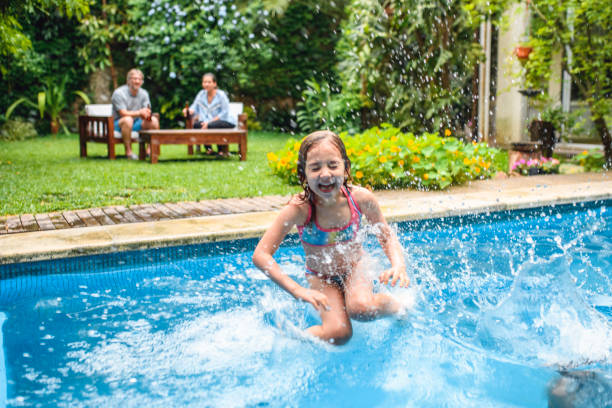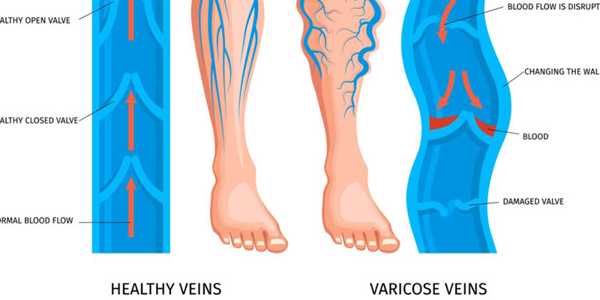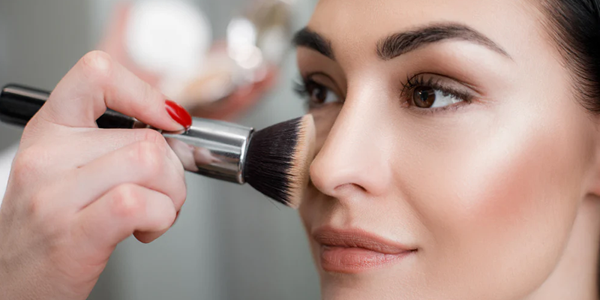Home Improvement
The Ultimate Guide to Choosing, Installing, and Maintaining Your Home Pool
This article covers everything essential for building and maintaining a home pool, including types of pools, how to select the best option for your space and usage, the installation process, vital equipment, and the importance of routine maintenance. With this insight, you’ll be ready to create a pool that enhances your lifestyle and adds value to your property.
A home swimming pool is more than a luxurious feature—it represents a lifestyle upgrade that offers opportunities for leisure, fitness, and year-round relaxation.

Whether you’re doing laps on a hot summer day or enjoying a quiet evening dip, a pool can transform your backyard into a serene personal retreat.
However, installing a pool demands thoughtful planning, budgeting, and expertise in selecting, building, and maintaining the right pool. This all-inclusive guide will walk you through every step of the process, from choosing a pool style to managing ongoing upkeep.
This article covers everything essential for building and maintaining a home pool, including types of pools, how to select the best option for your space and usage, the installation process, vital equipment, and the importance of routine maintenance. With this insight, you’ll be ready to create a pool that enhances your lifestyle and adds value to your property.
Types of Home Pools
Choosing the ideal pool depends on several factors, including available space, intended function, and your overall budget. Each type of pool comes with its own advantages, and understanding these can help you make an informed decision.
1. In-ground Pools
In-ground pools are a popular option due to their customizable design and long-term appeal. They offer a permanent solution that enhances the look of any backyard, although they come at a higher price. There are three main types of in-ground pool materials:
• Concrete Pools: Highly customizable and capable of being shaped to fit any design, concrete pools are also the most costly and take the longest to install.
• Fiberglass Pools: These come pre-molded and are quicker to install than concrete pools. Though customization is limited, fiberglass pools are durable and generally require less maintenance.
• Vinyl Liner Pools: The most affordable in-ground option, these pools have liners that need replacement every 7–10 years, which adds to the long-term maintenance costs.
2. Above-ground Pools
Above-ground pools are a budget-friendly, easy-to-install alternative. Available in shapes like round, oval, and rectangular, they provide flexibility for homeowners looking for a more temporary or compact pool solution.
3. Infinity Pools
Also known as vanishing edge pools, these are designed to give the illusion of water extending to the horizon. Commonly installed in scenic locations, they offer stunning visuals but come with higher installation and upkeep costs.
4. Plunge Pools
These are smaller, shallow pools intended for cooling off and relaxing. They are ideal for tight spaces or for those seeking a low-maintenance water feature, although they are not designed for swimming or exercise.
5. Natural Pools
Natural pools use plants and biological filters instead of chemicals to purify the water. Mimicking natural ponds, these pools blend into the landscape and are a great choice for eco-conscious homeowners.
How to Choose the Right Pool
Several factors must be considered to select a pool that fits your property and lifestyle. These include the space available, your reasons for wanting a pool, your budget, and aesthetic preferences.
1. Space and Size
Your available outdoor space will greatly influence the type and size of pool you can install. Larger backyards can accommodate expansive in-ground designs, while compact areas may be better suited to plunge or above-ground pools. Be sure to measure accurately and consider surrounding elements like decks, gardens, or seating areas.
2. Pool Usage
Consider how you plan to use your pool. If it’s for exercise, a large pool with enough depth is ideal. If relaxation or family time is the goal, a smaller pool or spa-style design might be a better fit.
3. Budget
Your financial plan will heavily impact your pool options. In-ground pools require a larger upfront investment due to excavation and customization, while above-ground pools are more cost-effective. Also, account for ongoing maintenance expenses like cleaning, chemical treatments, and repairs.
4. Style and Aesthetic Appeal
The pool’s design should complement your home’s architecture and landscaping. Whether you prefer a modern infinity edge or a traditional shape, select a style that enhances the overall outdoor environment.
The Pool Installation Process
Once you've chosen the type and design of your pool, the next step is installation. While above-ground pools may be suitable for DIY projects, in-ground pools typically require professional installation. Here’s an overview of the standard process:
1. Site Preparation
This step includes clearing debris, leveling the land, and marking out the pool’s dimensions. For in-ground pools, this also involves excavation.
2. Pool Construction
The construction process depends on the type of pool. Concrete pools are built with a rebar framework and concrete, while fiberglass and vinyl pools are set into the ground using pre-manufactured shells.
3. Installing Equipment
Essential systems such as the pump, filter, heater, and lighting are installed next. These components are critical for keeping the water clean and the pool functional.
4. Filling and Final Touches
Once the structure and systems are complete, the pool is filled and tested to ensure everything works as expected. Final touches like landscaping and decking are then added to complete the project.
Essential Pool Equipment
To operate your pool efficiently and safely, several pieces of equipment are necessary.
1. Pump and Filter
The pump circulates water through the filtration system, which removes debris and contaminants. Regular maintenance of these components ensures clean, healthy water.
2. Heater
A heater allows for extended seasonal use by warming the water. Options include electric, gas, and solar-powered heaters. Your choice should reflect local weather conditions and energy preferences.
3. Pool Cover
Covers help keep debris out of the pool, retain heat, and reduce evaporation, saving time and energy in maintenance.
4. Chemicals
Proper water chemistry is essential. Chlorine, pH balancers, and algaecides help keep the water clean and safe. Frequent testing and adjustments are required for optimal conditions.
Ongoing Pool Maintenance
Regular maintenance is key to ensuring your pool stays clean, safe, and operational for years.
1. Routine Cleaning
Use a skimmer and pool vacuum to remove debris from the water, walls, and floor. Preventing dirt and algae buildup is essential to maintaining water clarity.
2. Chemical Management
Test the pool water regularly to check chlorine, pH, and alkalinity levels. Proper chemical balance is crucial to avoid health risks and equipment damage.
3. Filtration Care
Maintain the filtration system by cleaning or replacing filters as needed to ensure proper circulation and cleanliness.
Safety Regulations
Adhering to local pool safety regulations is a legal and practical necessity. Common safety measures include:
• Fencing: Required in many areas to prevent unauthorized or accidental access, especially by children.
• Pool Covers: Safety covers may be mandated to restrict access when the pool isn’t in use.
• Alarms and Signage: Some jurisdictions require alarms or warning signs around pools for added safety.
Cost Considerations
Pool installation costs vary widely based on size, materials, and location. In-ground pools can cost between $25,000 and $50,000, while above-ground options typically range from $1,500 to $15,000. Don’t forget to include the cost of permits, equipment, and long-term maintenance in your planning.
Global Trends
The global popularity of home pools continues to grow. In Austria, mini and garden pools are gaining traction among homeowners with limited outdoor space. Meanwhile, in Thailand, pools are a common feature in luxury homes, often designed to handle the humid tropical environment.
Conclusion
A home swimming pool offers countless benefits but requires thoughtful planning and regular maintenance. Whether you invest in a high-end in-ground design or opt for a simple above-ground pool, choosing the right type and style for your space and lifestyle will help you enjoy your investment for years to come. With proper care and safety measures, your backyard can become a beautiful, relaxing haven.



